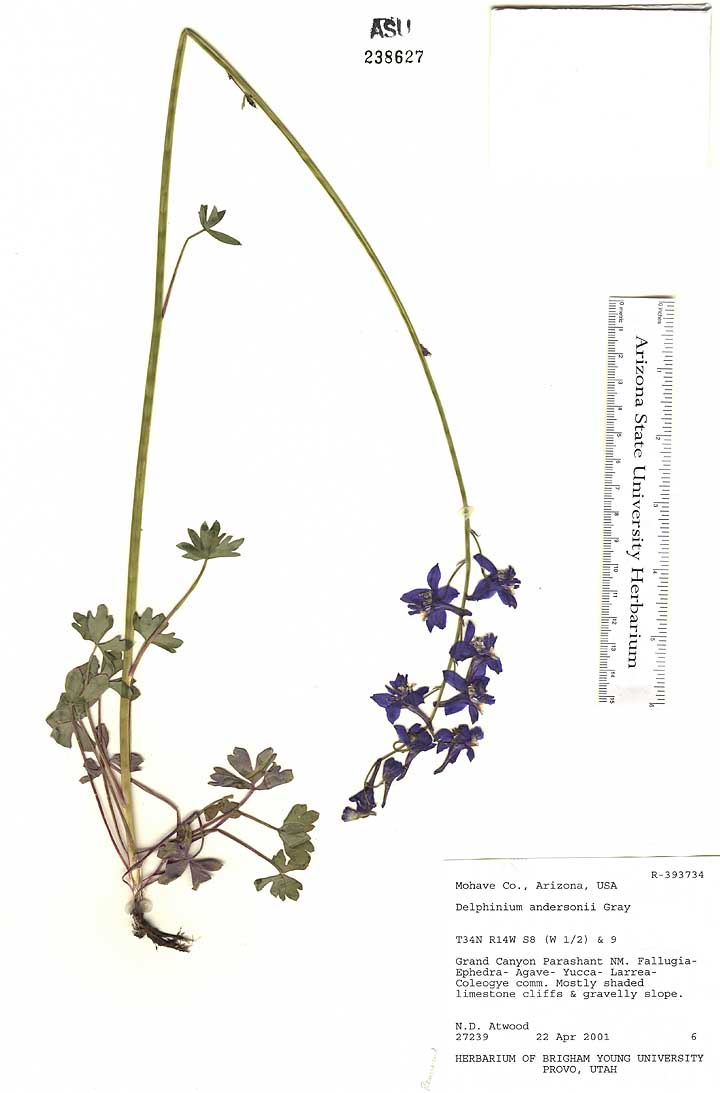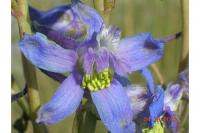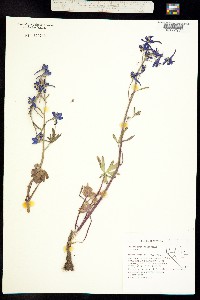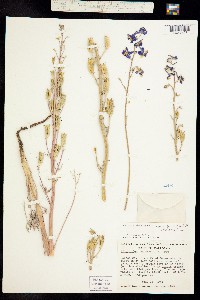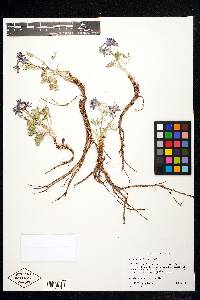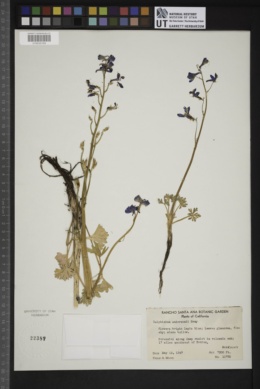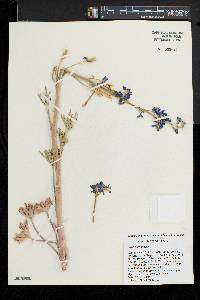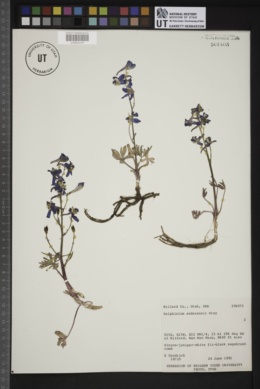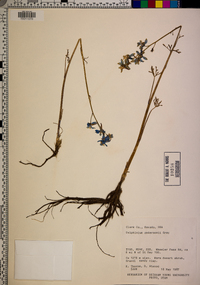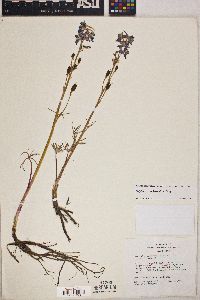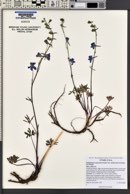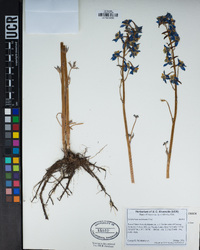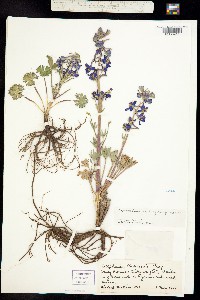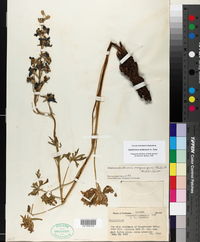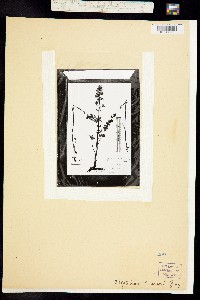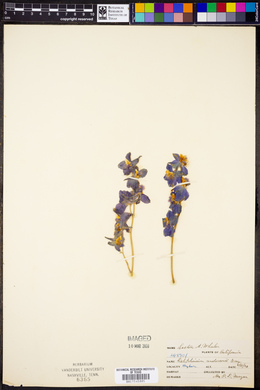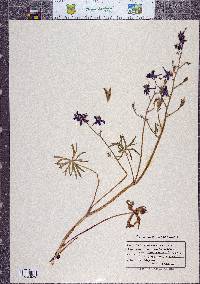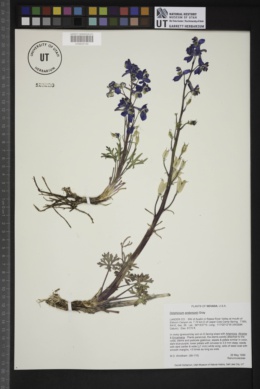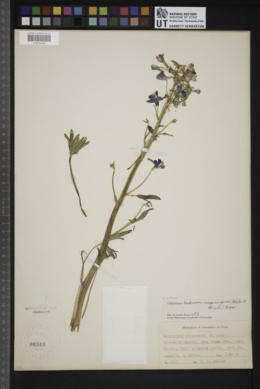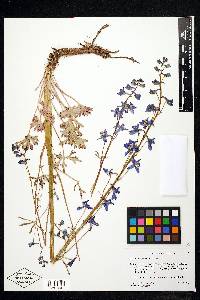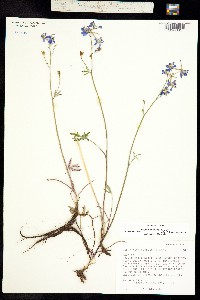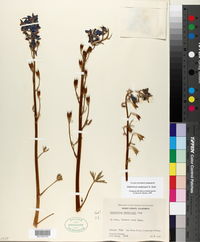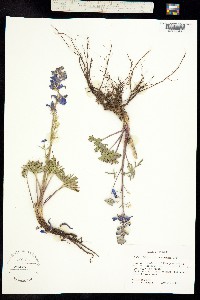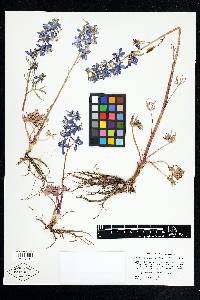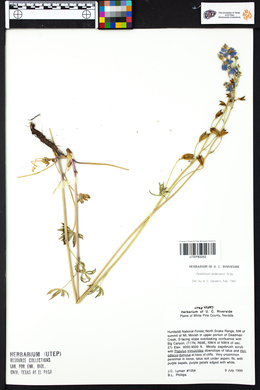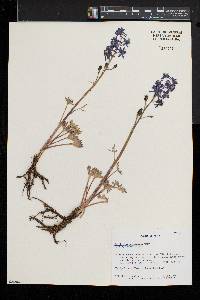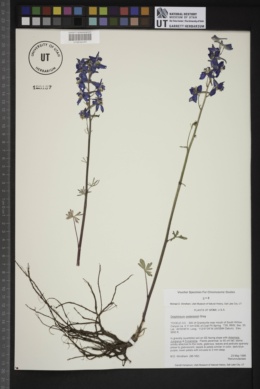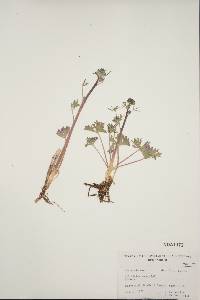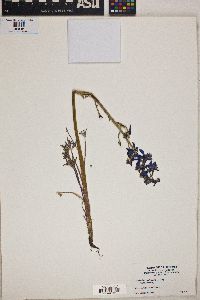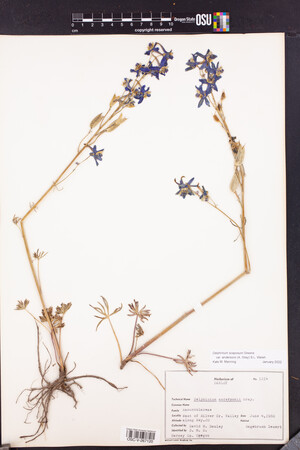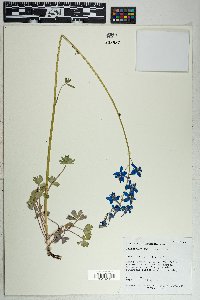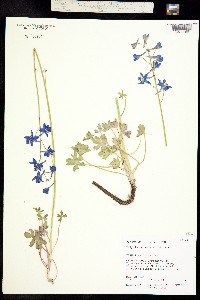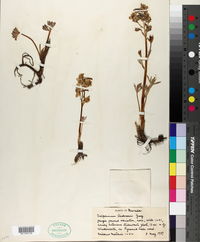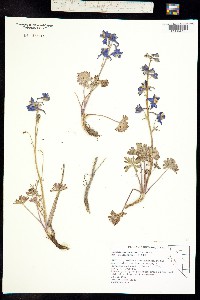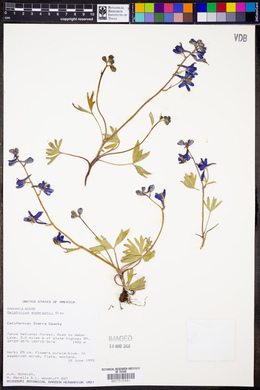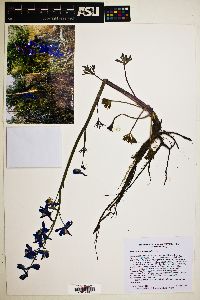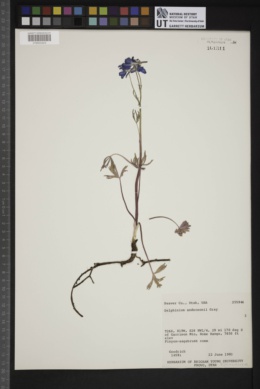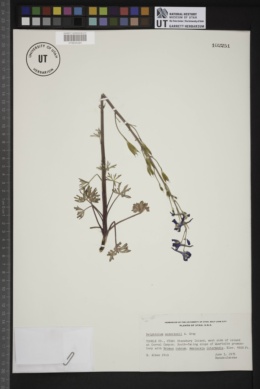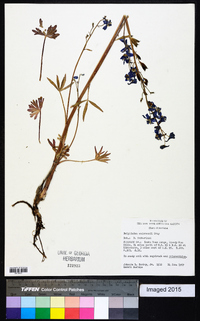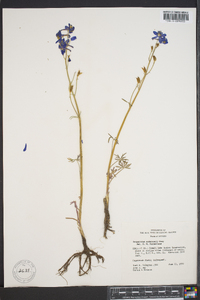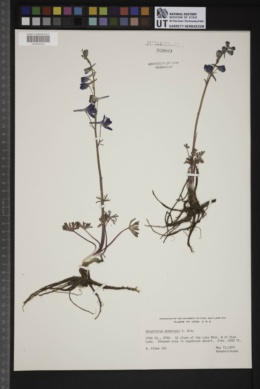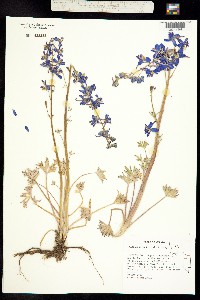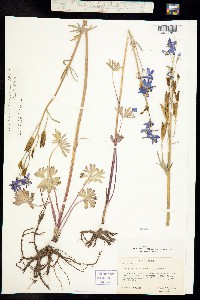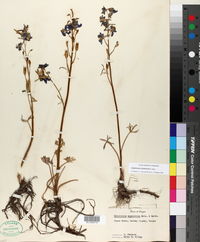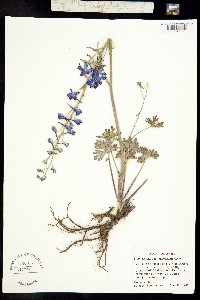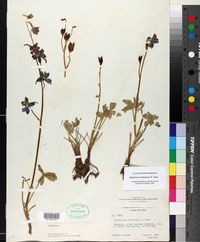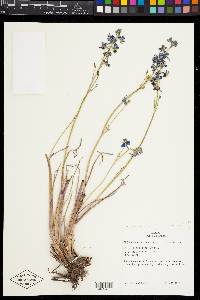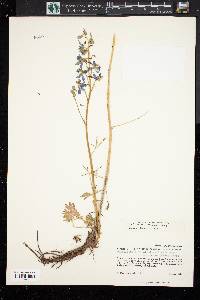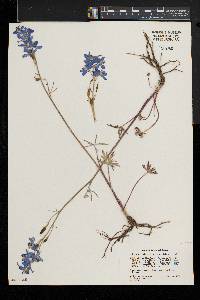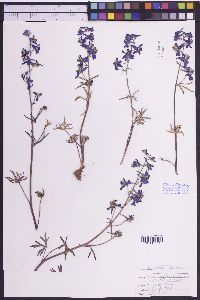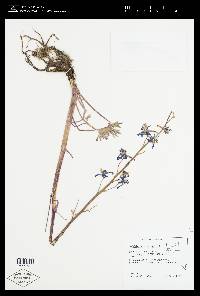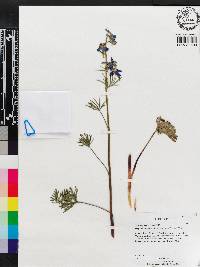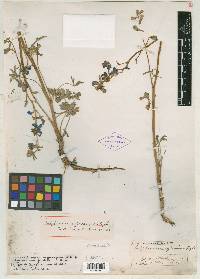
|
|
|
|
Family: Ranunculaceae
[Delphinium andersoni A. Gray, moreDelphinium andersoni var. andersoni A. Gray, Delphinium andersoni var. cognatum (Greene) Ewan, Delphinium andersonii subsp. andersonii , Delphinium andersonii subsp. cognatum (Greene) Davidson ex Ewan, Delphinium andersonii var. cognatum (Greene) R.J.Davis, Delphinium cognatum Greene, Delphinium scaposum var. andersonii (A. Gray ) S.L. Welsh, Delphinium xylorrhizum Rydb.] |
Stems (20-)30-60(-90) cm; base reddish, glabrous. Leaves mostly on proximal 1/2 of stem; green leaves usually present on proximal 1/5 of stem at anthesis; basal leaves 0-8 at anthesis; cauline leaves (0-)3-8 at anthesis; petiole 0.5-8 cm. Leaf blade round, 1.5-4 × 2-6 cm, nearly glabrous; ultimate lobes 5-30, width 2-8 mm (basal), 1-4 mm (cauline); lobe width of proximal leaves less than 4 mm. Inflorescences 10-25-flowered, cylindric; pedicel sigmoid (proximally spreading, distally ascending), 1-4(-6.8) cm, glabrous to puberulent; bracteoles 2-6(-8) mm from flowers, green, linear, 4-6(-11) mm, ± puberulent. Flowers: sepals dark blue, nearly glabrous, lateral sepals spreading to reflexed, 9-16 × 3-7 mm, spurs horizontal to slightly ascending, often decurved apically, 12-18 mm; lower petal blades elevated, ± exposing stamens, 4-8 mm, clefts 1-4 mm; hairs centered, mostly between claw and base of cleft, white. Fruits 17-32 mm, 4-5.5 times longer than wide, glabrous. Seeds: seed coat cells ± brick-shaped, cell margins ± undulate, surfaces smooth. 2 n = 16. Flowering late spring-early summer. Talus, cold desert scrub, often growing up through shrubs, low places where snow collects; 1300-2000 m; Calif., Idaho, Mont., Nev., Oreg., Utah. In much of its range Delphinium andersonii hybridizes occasionally with members of the D . nuttallianum complex and apparently with D . parishii in at least one site in California. These three taxa, with D . scaposum , form an interesting group in that they appear to be ecological replacements for one another, with D . parishii occupying arid, hot deserts to the south and southwest, D . andersonii growing in cooler, higher latitude and altitude deserts farther north, D . scaposum in cool deserts farther east, and D . nuttallianum at higher elevations in much of the geographic range of the other three species. Delphinium andersonii is often mistaken for D . nuttallianum . Most individuals of D . andersonii (roots much larger and more fibrous; stems solidly attached to roots; fruits long, narrow, erect; inflorescences usually longer and narrower at base; and pedicel sigmoid) can easily be distinguished from D . nuttallianum (roots smaller and not fibrous; stems tenuously attached to roots; fruits shorter, proportionally thicker, spreading; inflorescences relatively shorter and wider at base; and pedicel nearly straight). Although roots of Delphinium andersonii are quite similar to those of D . antoninum , the two taxa may be readily distinguished by most features that separate D . nuttallianum from D . andersonii . The name Delphinium menziesii was misapplied to D . andersonii by S. Watson.
|
This project was made possible in part by the Institute of Museum and Library Services [MG-70-19-0057-19].
Powered by Symbiota

